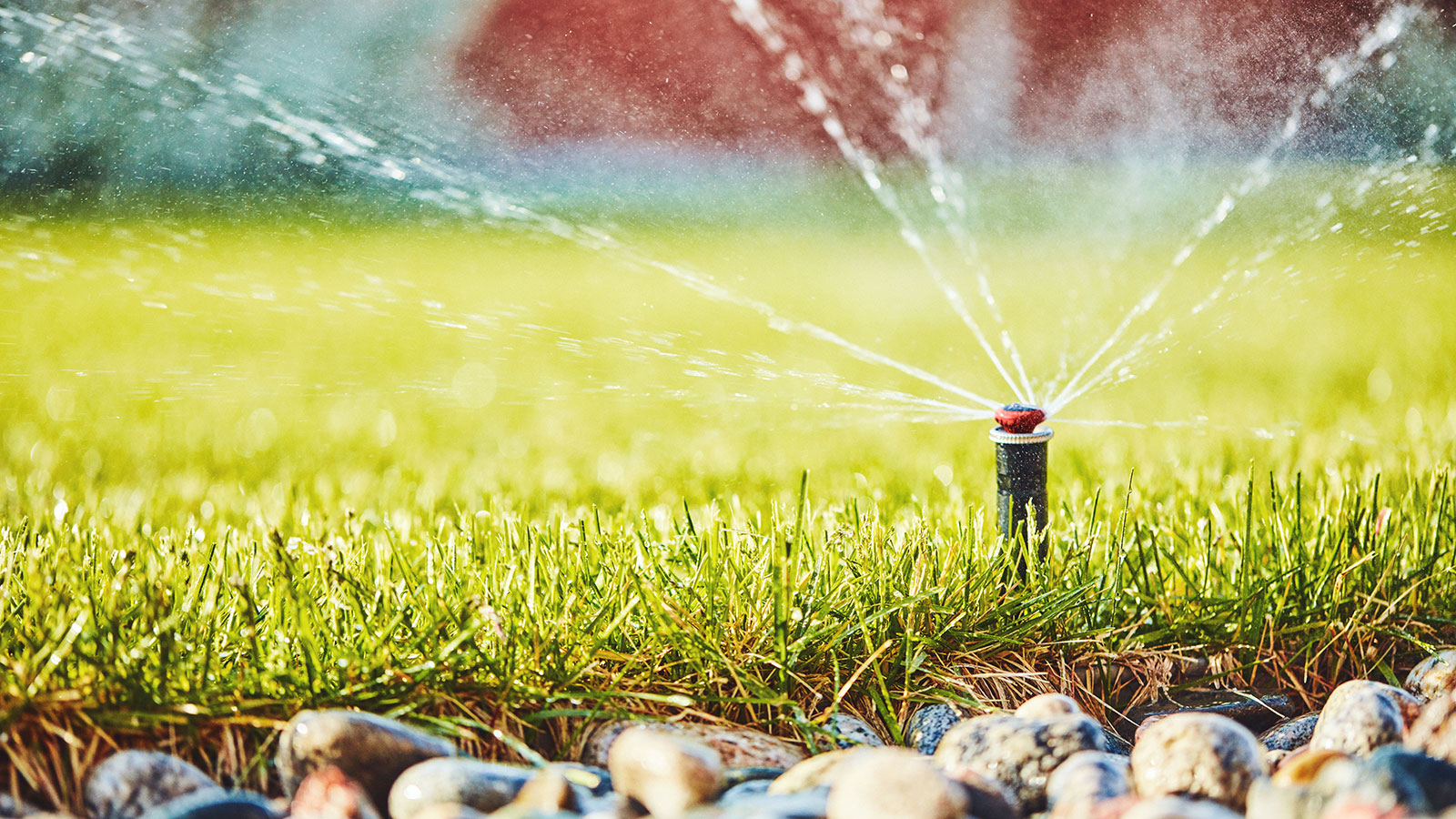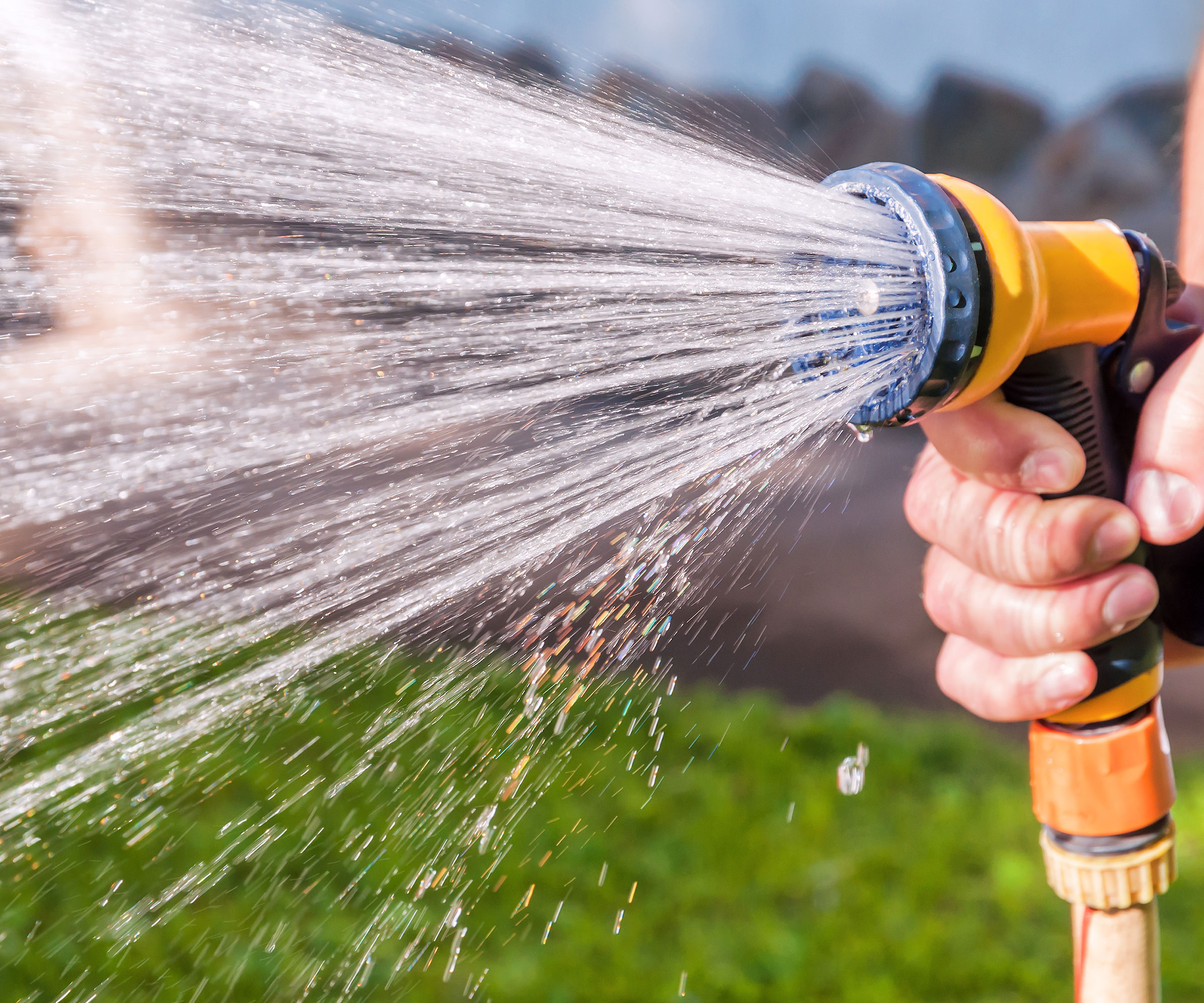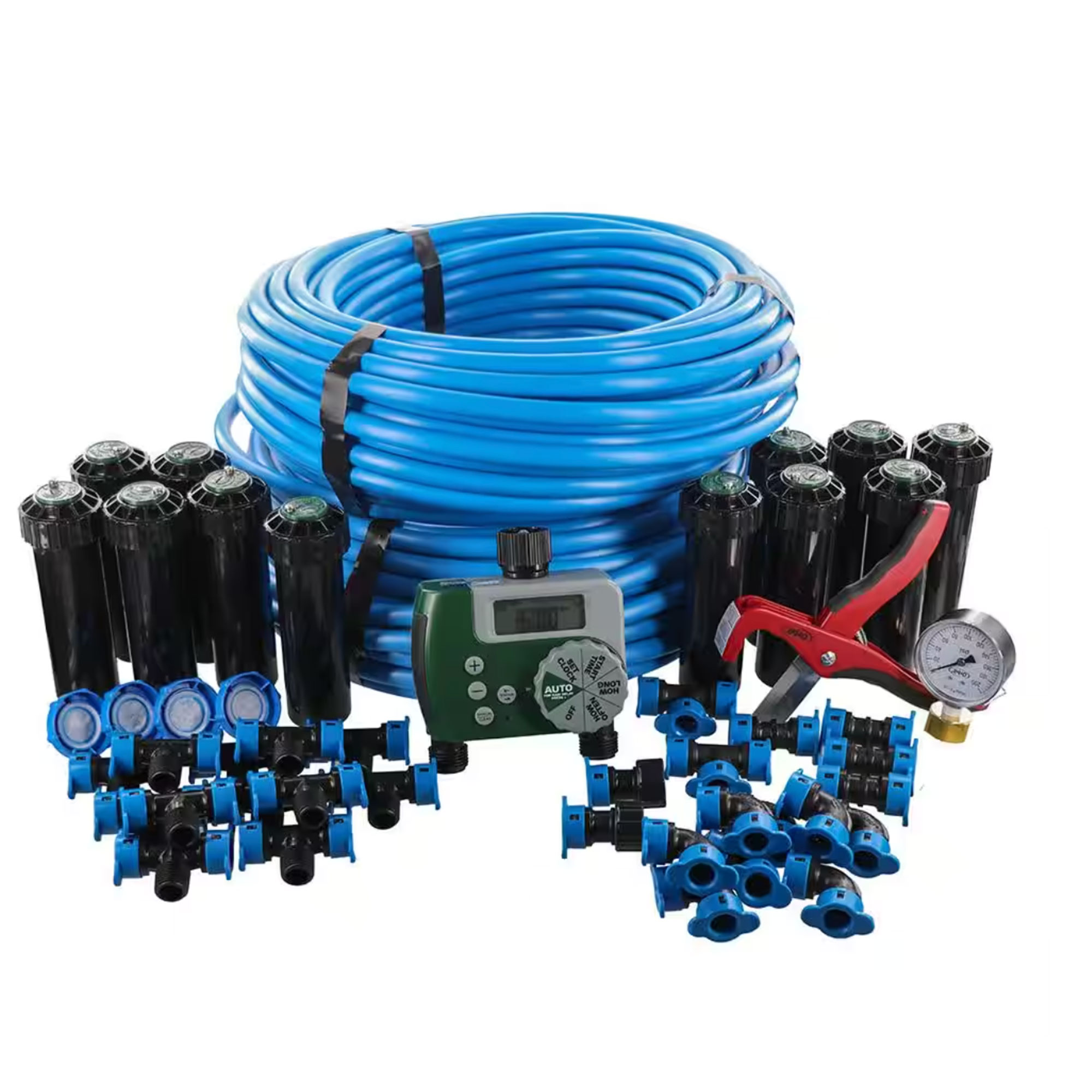How often should you water your lawn in summer? Learn from the professionals and get it right
Every day, every other day or just twice a week? Don’t waste time, effort and valuable resources when watering your lawn


It can prove a real headache, especially when the weather is warm, but knowing exactly how often to water the lawn in summer can be a real game changer.
Not only does it use up valuable water and inconvenience the family and neighbors, but watering the grass too regularly can actually cause long term damage. Encouraging grass to become lazy when seeking water, these plants happily develop shallow roots concentrating their efforts on growing lush leaves instead. Unfortunately, this can prove a problem in times of drought, when watering stops and natural sources are scarce, leading the lawn to brown and even die. Regular damp conditions can also promote disease and fungi.
Underwatering grass has its obvious issues too, stunting growth and rapidly leading to brown, dry patches appearing and eventually, taking over. But by following top expert know-how you can take the stressful guesswork out of lawn care and find the perfect balance.

If done correctly, watering a lawn can help keep it green during warmer weather
How often should you water your lawn in summer?
There’s more to watering your lawn than just following your instincts or the default settings on your nifty irrigation system. Knowing the best time to water your lawn, and how often to do it is key, as getting the timing right both short and long-term will have a considerable impact on the health of your lawn.
‘The goal is to provide your lawn with between 1-1.5 inches of water per week for cool season grasses and 0.5-1 inch of water per week for warm season grasses,’ says Stacie Smith, owner of lawn care specialists Smithson Exteriors. ‘So, if there is no rainfall, then watering every two days (three times a week) should be sufficient for most lawns.’
But rather than relying on set watering routines it's worth getting to know your grass and its needs a little better.
‘Watering your lawn during the summer or any time of year should not be done according to the calendar. Choosing when to water should be guided by the look of your lawn, as well as rainfall history,’ explains Eric DeBoer, Agronomist at Simple Lawn Solutions.
Design expertise in your inbox – from inspiring decorating ideas and beautiful celebrity homes to practical gardening advice and shopping round-ups.
But what signs should we look for and how do we know when is the perfect time to water? Well apparently, there are clear indications to look out for. Eric continues, ‘Wait to water until you start to see visual signs of drought stress, like foot printing (grass doesn't rebound from foot traffic as quickly), and purpling or bluing of your grass. If these signs are evident, a deep watering would be a good idea that evening or the following morning.’
Bear in mind that watering your grass at night can cause problems if you do it on a regular basis, so pick your time of day carefully, especially if you have also been cutting grass in hot weather.

Only water your lawn when it's showing signs of needing extra moisture
Watering cool season grasses in summer
Cool-season grasses, such as Kentucky bluegrass, fescue, and ryegrass, thrive in cooler regions. During the summer, it's important to adjust your watering routine to meet their specific needs. Gene Caballero, co-founder of lawn care specialist GreenPal shares his insights.
Correct watering can ensure there is deep root growth. Watering deeply and infrequently encourages the grass roots to grow deeper into the soil, making the lawn more resilient and drought-tolerant. It also helps prevent fungal diseases that can occur with excessive moisture or prolonged wetness. Giving cool season grasses the right amount of water also ensures steady growth, resulting in a thick and green lawn.
Overwatering cool season grasses in summer can cause you headaches. Frequent and shallow watering promotes shallow root growth, making the grass more susceptible to drought stress. Excessive moisture can also weaken the grass blades and make them more prone to disease and pests. What's more, overwatering leads to the wastage of water resources and increased water bills.
Underwatering cool season grasses can also lead to problems. Insufficient water can cause the grass to become stressed, turn brown, and go dormant, leaving you having to repair patches in the grass. Underwatered lawns are also more susceptible to weed invasion, as the grass is weaker and unable to compete effectively. With inadequate moisture, the lawn may struggle to recover from foot traffic, pet damage, or other stressors.
Watering warm season grasses in summer
Warm-season grasses, such as Bermuda grass, Zoysia grass, and St. Augustine grass, are well-suited for hot climates and have different watering requirements compared to cool season grasses. Gene Caballero has this advice for watering them.
Correct watering will provide enough water to ensure healthy growth and allows the grass to withstand heat stress. Properly watered warm season grasses develop deep root systems, making them more resilient during dry periods. It can also help with weed prevention, as dense and healthy warm-season lawns naturally suppress weed growth.
Overwatering can lead to shallow root grow, making the grass less resilient and more dependent on frequent irrigation, so make sure you only water when the lawn needs it. Constant moisture can also create a favorable environment for diseases, such as fungal infections. Finally, overwatering is a common lawn care mistake as it can result in faster grass growth, requiring more frequent mowing and maintenance.
Underwatering can cause warm-season grasses to go dormant or turn brown during extended periods of heat and drought. It also causes reduced vigor and thinning, allowing weeds to take hold. Without proper moisture, warm-season grasses may struggle to recover from damage or stress.
Give your lawn the right amount of water in summer with these practical buys

This water timer can be easily fitted to your outdoor faucet so you can take control of your lawn watering schedule more easily. It can water two separate zones in your backyard, and comes with 38 watering frequencies and a rain delay function so your lawn only gets watered when it needs it.

With its 20 nozzles, this oscillating sprinkler can cover up to 4,500 sq ft of lawn. It's easy to adjust the area you want to water, and the zoom function means you can hone in on a patch of lawn that needs more attention rather than watering the entire lawn. It also comes with a limited lifetime warranty for peace of mind.

Take the hard work out of watering your lawn with this in ground system. It features 12 sprinklers for two separate zones, tubing, fittings, a pressure gauge and digital timer. It's suitable for watering two small to medium areas and has flexible programming with a run time of 1-240 minutes.
FAQs
If rain does fall how does this effect a watering routine?
Whether you find it annoying or a bonus, rainfall during the summer months can be useful in the garden. ‘A moderate rainfall will give the ground 0.2 of an inch of water per hour,' says Stacie Smith, owner of lawn care specialists Smithson Exteriors. 'So, if you get 6-7 hours of rain per week, you might not need to water your lawn at all for either warm or cool season grasses.’ She also adds, ‘It is better to water deeply and infrequently than it is to water daily.’
Although watering your lawn in the height of summer can clearly have its benefits, knowing how often to do it will ensure you don't waste precious natural resources unnecessarily.
Learning how to aerate a lawn correctly will allow air, moisture and nutrients to easily reach the roots of the grass, ensuring that it can cope better with the stresses of heat and reduced rainfall in summer.

Journalist Jill Morgan has spent over 20 years writing and editing gardening, interior and property features. Titles she has worked on include The English Home, House Beautiful, Ideal Home, Houzz and Modern Gardens and she writes regularly for H&G as a Contributing Editor. Whilst she is a dab hand at renovation projects and DIY, she is happiest when out digging in the garden or planning a new border.